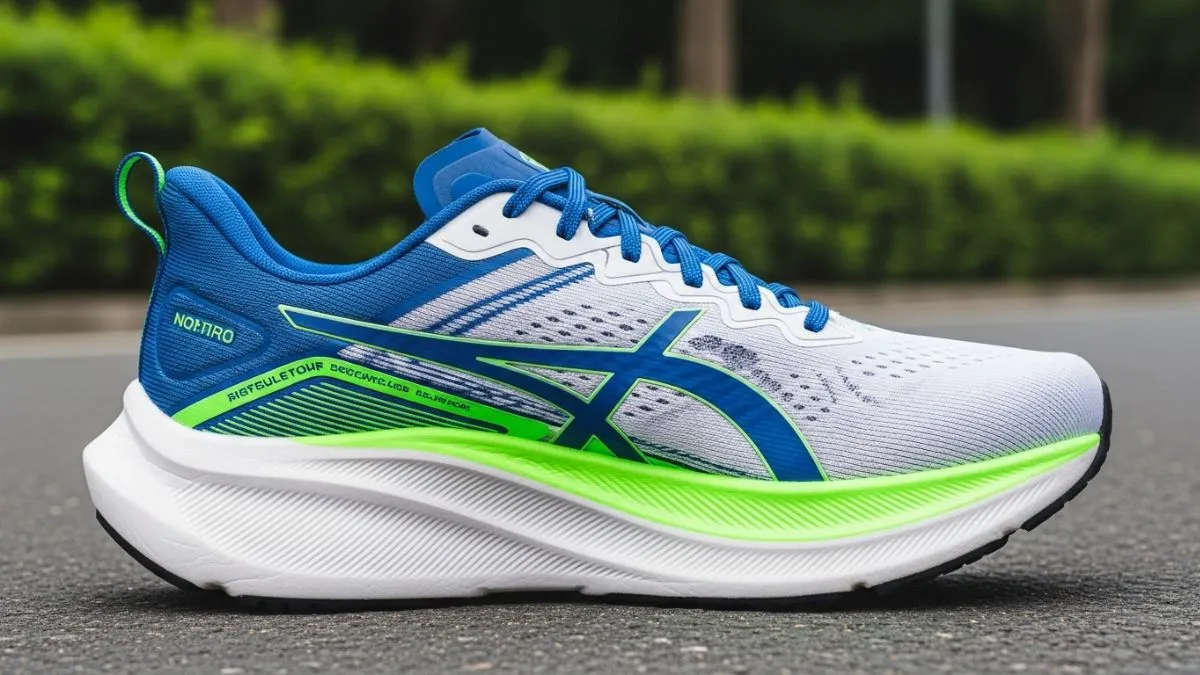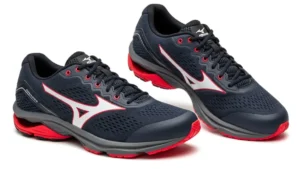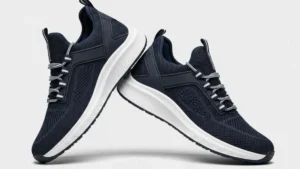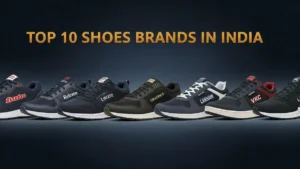
Yes, carbon plate shoes make you faster. They reduce energy loss and improve running economy, which is why elite marathoners rely on them. They’re not the best for everyday jogs because they wear out quicker and cost more. The leading brands in 2025 are Nike, Adidas, Asics, Saucony, and Hoka.
If you’re curious about whether carbon plate running shoes live up to the hype, you’ll find clear answers here. This guide explains how they work, the pros and cons, and which models stand out in 2025. You’ll also see how to choose the right pair based on your goals and budget.
What Are Carbon Plate Running Shoes?
Carbon plate running shoes are high-performance trainers built with a stiff carbon fiber plate inside the midsole. The plate works with the foam to improve stride efficiency, giving runners more forward push with less wasted energy. They’re designed for racing and long-distance speed rather than everyday jogging.
Carbon plates act like a springboard. Each step compresses the foam, and the plate helps snap your foot forward. This reduces the energy your muscles need to spend. Think of it as running with a loaded slingshot under your foot—each step releases more return than a standard shoe.
How Do Carbon Plates Work?
Carbon plates work by stiffening the sole and creating a lever effect that propels the runner forward, improving running economy by about 3–4%. Instead of letting your foot flex naturally, the plate keeps it rigid, channeling your push into forward motion.
Picture walking on a diving board that bounces you ahead with each stride. This is why marathon runners see faster times wearing these shoes.
Who Should Use Carbon Plate Shoes?
Carbon plate shoes are best suited for competitive and serious runners aiming for faster times in races. They’re not recommended for beginners or casual joggers due to cost, durability, and adaptation demands.
These shoes shine in marathons, half marathons, and 10Ks where efficiency matters most. Recreational joggers may not see big benefits, and the limited lifespan (200–300 miles) makes them a costly choice for daily training.
Benefits of Carbon Plate Running Shoes
Speed and Efficiency Gains
Carbon plate running shoes improve running economy by about 3–4%, translating into faster race times. Studies show elite marathoners wearing them cut minutes off finishing times, with more than 70% of podium finishes since 2019 linked to carbon plate models.
The stiff plate acts like a lever, reducing wasted motion in each stride. This means less effort for the same pace, which adds up during long races. World records in the marathon, set by Eliud Kipchoge and others, were achieved wearing carbon plate shoes.
Reduced Fatigue Over Long Distances
Carbon plate shoes help runners maintain pace longer by storing and returning energy with each step, delaying fatigue in marathons and half marathons.
When legs tire, form usually breaks down, leading to slower times. The plate and foam combo reduces the strain on muscles by acting like a spring, giving back energy that would normally be lost. For marathoners, that can mean holding goal pace deeper into the race.
Injury Considerations
Carbon plate shoes can increase calf and Achilles strain, especially for runners who aren’t used to the stiffness. They require a break-in period and aren’t ideal for everyday training.
The rigid design changes natural biomechanics. While they improve speed, they shift stress to different muscles, which may cause soreness or overuse injuries if worn too often. Most experts recommend using them mainly for races or fast training runs.
Best Carbon Plate Running Shoes in 2025
The best carbon plate running shoes in 2025 come from Nike, Adidas, Asics, Saucony, and Hoka. Models like the Alphafly 3, Vaporfly 3, and Adios Pro 3 dominate marathons, offering speed, efficiency, and cushioning. Each shoe caters to specific running styles, so the right pick depends on distance, stride, and budget.
Nike Alphafly 3
The Nike Alphafly 3 is built for marathon speed, combining thick ZoomX foam with twin air pods and a carbon plate. It’s designed for runners chasing personal bests over long distances.
Racers benefit from maximum cushioning and strong energy return, making it ideal for marathons. It’s heavier than the Vaporfly but shines over 26.2 miles.
Nike Vaporfly 3
The Nike Vaporfly 3 balances lightweight build and performance, making it one of the fastest shoes for half marathons and marathons.
It’s slightly less cushioned than the Alphafly but more versatile. Many elite athletes prefer it for its efficiency and reduced weight, which helps maintain speed deep into races.
Adidas Adizero Adios Pro 3
The Adidas Adizero Adios Pro 3 is a proven marathon shoe with carbon-infused EnergyRods that deliver efficiency and stability. Backed by world-class race results, it’s a reliable choice for runners who want a non-Nike option. It provides strong cushioning without feeling too soft, helping maintain rhythm in long races.
Asics Metaspeed Sky+
The Asics Metaspeed Sky+ is designed for stride runners who cover more ground with each step. Its carbon plate and foam work to lengthen stride and conserve energy.
This shoe suits runners with long, powerful strides. It’s lightweight, cushioned, and often compared to Nike’s top models in terms of speed.
Saucony Endorphin Elite
The Saucony Endorphin Elite is a lightweight, aggressive racing shoe built for speed over 10Ks and half marathons. Its responsive foam and plate deliver a snappy ride. The low weight makes it perfect for faster runners who prioritize turnover speed and efficiency over maximum cushioning.
Hoka Rocket X 2
The Hoka Rocket X 2 offers maximum cushioning paired with a carbon plate, giving marathoners a protective yet fast ride. It’s bulkier than some rivals but excels in comfort for longer distances. Runners who need extra protection for joints while racing will find it a strong option.
How to Choose the Right Carbon Plate Running Shoes
The right carbon plate running shoe depends on your race distance, running style, and budget. Marathoners need maximum cushioning, while shorter races benefit from lighter builds. Fit matters more than speed claims, and with most pairs lasting only 200–300 miles, cost should always factor into your decision.
Consider Your Running Goals
Marathoners should pick cushioned shoes like the Nike Alphafly 3, while 5K and 10K racers might prefer lighter models like the Saucony Endorphin Elite.
Think of it this way: A carpenter doesn’t use the same hammer for every job, and a runner shouldn’t use the same shoe for every distance. Match your shoe to your purpose.
Fit and Comfort Over Speed
Fit trumps everything else. A poorly fitting carbon plate shoe will cause blisters, instability, and wasted money, even if it promises speed. Try shoes on in-store if possible, or order from retailers with flexible return policies. The right fit feels snug in the heel and midfoot but leaves room in the toe box for swelling during long races.
Budget and Durability
Most carbon plate running shoes last between 200 and 300 miles, which is shorter than standard trainers that can exceed 500 miles. Expect to replace them often if you race frequently. If you’re only racing a few times per year, one pair can last a season. Competitive athletes often
Final Thoughts
Carbon plate running shoes deliver speed, efficiency, and energy savings, making them best for competitive runners chasing faster race times. They’re not ideal for beginners or daily joggers due to cost and limited durability. If you’re serious about performance, these shoes can give you a clear edge on race day.
FAQs
Do Carbon Plate Shoes Make You Faster?
Yes, carbon plate running shoes make most runners faster by improving running economy around 3–4%. Studies and race data confirm they reduce energy loss, helping runners sustain pace longer. That’s why the majority of marathon records and podium finishes since 2019 were achieved in carbon plate shoes.
How Long Do Carbon Plate Shoes Last?
Carbon plate running shoes typically last 200–300 miles, which is far less than traditional trainers that can last 400–600 miles. Their high-performance foams compress faster, and the stiff plate makes them less durable for daily use. Most runners save them for races and key workouts.
Can You Train Daily in Carbon Plate Shoes?
No, carbon plate running shoes aren’t designed for daily training. The stiff plate can overwork your calves and Achilles if worn too often. Experts suggest using them only for races or 1–2 key sessions per week, while relying on regular trainers for everyday mileage.
Are Carbon Plate Shoes Good for Beginners?
Carbon plate shoes aren’t recommended for beginners. They’re expensive, less durable, and demand an adaptation period. Casual runners won’t see the same benefits as competitive athletes. Beginners are better off with standard running shoes that offer durability, comfort, and gradual support while building strength and form.




